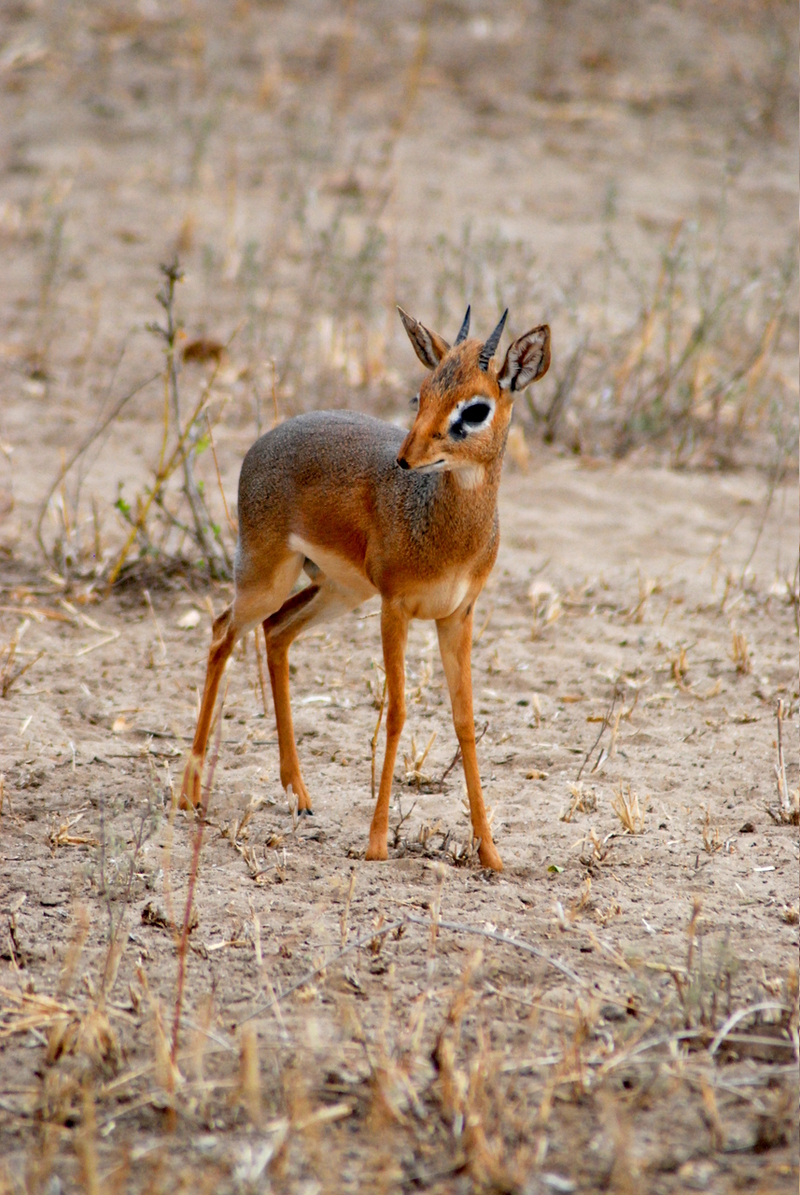|
| Query: water python | Result: 17th of 23 | |
Dik-Dik (Genus: Madoqua) - Wiki
| Subject: | Dik-Dik (Genus: Madoqua) - Wiki
| |

| Resolution: 857x1280
File Size: 925405 Bytes
Date: 2007:08:08 15:23:19
Camera: NIKON D80 (NIKON CORPORATION)
F number: f/5.7
Exposure: 10/8000 sec
Focal Length: 3000/10
Upload Date: 2008:01:10 14:32:16
|
ERROR : Server Busy(-1105)
ERROR : Server Busy(-1105)
Dik-Dik (Genus: Madoqua) - Wiki
Dik-dik
From Wikipedia, the free encyclopedia
Order: Artiodactyla
Family: Bovidae
Genus: Madoqua
[Photo] Male Dik-Dik, Tarangire national Park, Tanzania. Date 8. August, 2007. Author: Pedro Gonnet (http://en.wikipedia.org/wiki/User:Pedro_Gonnet). Source: http://en.wikipedia.org/wiki/Image:DikDik.jpg
Dik-diks, pronounced "d??k’ d??k" or "dick dick", and named for the sound they make when alarmed, are small antelopes of the Genus Madoqua that live in the bush of southern and eastern Africa. Dik-diks stand 30???40 cm at the shoulder and weigh 3???6 kg, making them the smallest of the ruminant species. They have an elongated snout and a soft coat that is grey or brownish above and white below. The hair on the crown forms an upright tuft that sometimes partially conceals the short, ringed horns of the male.
Physical characteristics
Female dik-diks are somewhat larger than males. The males have horns, which are small (about 3 in or 7.5 cm), slanted backwards. The head of the dik-dik often seems disproportionate to the animal's small body. The upper body is grey-brown, while the lower parts of the body, including the legs, belly, crest, and flanks, are tan.
Habitat
Dik-diks seek habitats with plentiful supply of edible grasses and shrubs, but prefer foliage that is not so tall as to obstruct their sight lines. They live in open plains amongst other grass-eaters such as giraffes, zebras, and other antelopes. Dik-diks may live in places as varied as dense forest or open plain, but they must have good cover and not too much tall grass or plants. They will move when the grass grows too tall for them to see over. They usually live in pairs over a 12-acre territory. The territories are often in low, shrubby bush along dry, rocky streambeds where there are plenty of hiding places. Dik-diks have a series of runways through and around the borders of their territories to block off other Dik-diks, mainly females. They live in east Africa.
Diet
Dik-diks are herbivores, consuming foliage, shoots, fruit and berries. Dik-diks consume sufficient amounts of water for hydration, making drinking unnecessary. Their special shaped head gives them the ability to eat the leaves between the spikes on the Acacia trees, and the ability to feed while still keeping their head high for observation for predators.
Social Structure
Dik-diks form monogamous relationships within defined territories. At birth fawns weigh about 1.5 lb (0.7 kg), and reach sexual maturity in six to eight months.
Predators
Dik-diks are hunted primarily by monitor lizards, eagles, pythons, smaller cats such as the caracal, as well as lions, cheetahs, hyenas, wild dogs, and jackals.
Classification
There are four species of dik-dik:
- Madoqua gunther G??nther, 1894 ??? G??nther's Dik-dik
- Madoqua kirkii (G??nther, 1880) ??? Kirk's Dik-dik
- Madoqua piacentinii Drake-Brockman, 1911 ??? Silver Dik-dik
- Madoqua saltiana (Desmarest, 1816) ??? Salt's Dik-dik
Culture
In the fifth section of In Memory of My Feelings, the poet Frank O'Hara describes "the startled eyes of the dikdik" after asserting "to move is to love / and the scrutiny of all things is syllogistic".
It was mentioned in the comic Space Moose.
The anime Ultimate Muscle has a wrestler named Dik-Dik Van-Dik.
Adam Sessler, co-host of the TV show X-play, often says the word Dik-dik.
http://en.wikipedia.org/wiki/Dik-dik
| The text in this page is based on the copyrighted Wikipedia article shown in above URL. It is used under the GNU Free Documentation License. You may redistribute it, verbatim or modified, providing that you comply with the terms of the GFDL. |
|
Comments |
|---|
| | Guest |
|
| what state |
^o^
Animal Pictures Archive for smart phones
^o^
|
|
|

